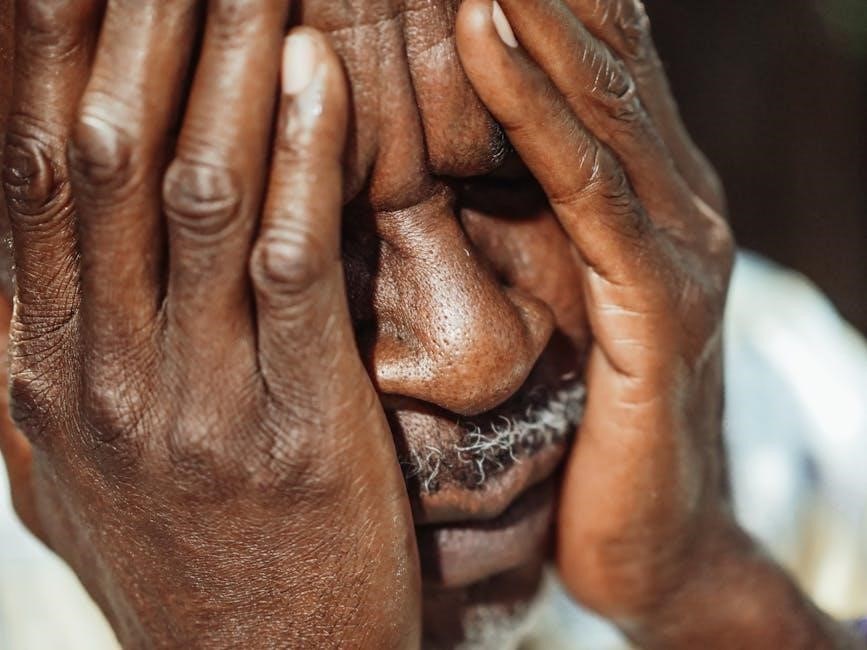
Gabriel García Márquez‚ born in 1927 in Aracataca‚ Colombia‚ is a Nobel Prize-winning author known for magical realism and profound exploration of Latin American culture and history.
1.1 Biography of the Author
Gabriel García Márquez‚ born in 1927 in Aracataca‚ Colombia‚ was a Nobel Prize-winning author renowned for his magical realism. He grew up in his grandparents’ ancestral home‚ where his grandfather‚ Nicolás Márquez‚ a colonel in the War of 1‚000 Days‚ influenced his storytelling. García Márquez studied law and journalism‚ which shaped his narrative style. His background as a journalist lent a documentary-like quality to works like Chronicle of a Death Foretold. He won the Nobel Prize in Literature in 1982 for his profound exploration of Latin American culture and history. His unique style blended reality and fantasy‚ captivating readers worldwide. García Márquez passed away in 2014‚ leaving a legacy as one of the most influential writers of the 20th century.
1.2 Literary Style and Contributions
Gabriel García Márquez is celebrated for his unique literary style‚ which blends magical realism with deep psychological and cultural insights. His writing often intertwines fantastical elements with everyday life‚ creating a captivating narrative voice. In Chronicle of a Death Foretold‚ his journalistic background is evident‚ as he employs a documentary-like approach to recount the tragic events. His ability to explore themes such as fate‚ honor‚ and collective guilt has left an indelible mark on world literature. García Márquez’s contributions to Latin American culture are immense‚ offering a window into its rich history and societal norms. His work continues to inspire scholars and readers‚ solidifying his legacy as a literary giant.
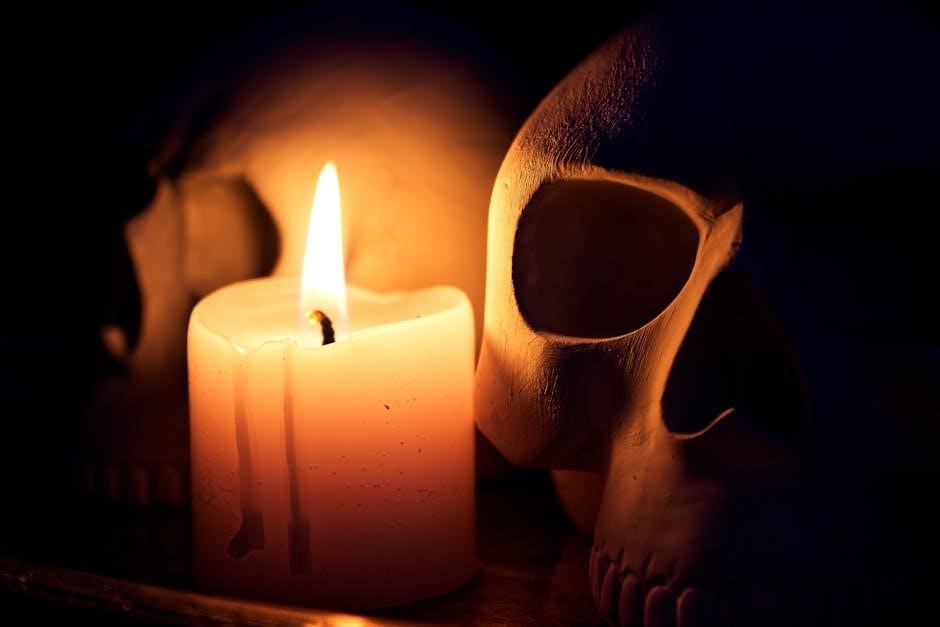
Plot Summary of Chronicle of a Death Foretold
Chronicle of a Death Foretold recounts the tragic events leading to Santiago Nasar’s murder‚ exploring fate‚ honor‚ and collective guilt through a non-linear narrative.
2.1 The Wedding Night and Its Consequences
The wedding night of Angela Vicario and Bayardo San Román unfolds with a devastating revelation: Angela is not a virgin. This discovery ignites a chain of events rooted in cultural expectations of honor and purity. Bayardo‚ feeling betrayed‚ abandons Angela‚ and she is returned to her family in disgrace. Forced by her family to name the man who defiled her‚ Angela accuses Santiago Nasar‚ despite his innocence. This accusation sets in motion the tragic sequence of events leading to Santiago’s murder. The night not only seals Santiago’s fate but also exposes the rigid societal norms that prioritize honor over truth‚ shaping the novel’s exploration of morality and justice.
2.2 The Murder of Santiago Nasar
The murder of Santiago Nasar is the pivotal event of the novel‚ foretold yet seemingly inevitable. On the day of the bishop’s visit‚ Santiago‚ unaware of the danger‚ prepares to greet the religious figure. The Vicario brothers‚ seeking to restore their family’s honor‚ publicly announce their intent to kill him. Despite widespread knowledge of the impending murder‚ no one intervenes effectively. Santiago is fatally stabbed by the brothers‚ his death marking a tragic culmination of societal expectations and personal vengeance. The event leaves the community in shock‚ prompting reflection on collective responsibility and the rigid norms that led to his demise. Santiago’s murder becomes a symbol of fate and societal failings.

Key Themes in the Novel
The novel explores fate‚ honor‚ shame‚ collective guilt‚ and societal norms‚ delving into human nature and cultural expectations that drive tragic events in a small Colombian town.
3.1 Fate and Destiny
The concept of fate and destiny is central to Chronicle of a Death Foretold‚ as the novel unfolds with an inevitable and inescapable trajectory. The murder of Santiago Nasar is foretold from the beginning‚ creating a sense of doom that permeates the narrative. García Márquez masterfully weaves the idea that certain events are predetermined‚ leaving characters and readers alike powerless to alter the course of events; The townspeople’s knowledge of the impending tragedy‚ yet their inability to prevent it‚ highlights the inexorable nature of fate. This theme is deeply intertwined with the cultural and societal norms of the time‚ emphasizing how individual actions are often governed by forces beyond human control. The interplay between destiny and free will is a poignant exploration of human existence.
3.2 Honor and Shame in Latin American Culture

The novella explores the profound impact of honor and shame in Latin American culture‚ particularly in the context of sexual purity and familial reputation. The story revolves around the return of Angela Vicario to her family after her wedding night‚ as she is discovered not to be a virgin. This act of shame prompts her family to seek vengeance‚ leading to Santiago Nasar’s murder. The rigid societal norms dictate that honor must be restored through violence‚ highlighting the oppressive gender roles and cultural expectations of the time. García Márquez critiques the toxic ideals of masculinity and femininity that perpetuate such tragedies‚ offering a stark commentary on the destructive power of societal expectations.
3.3 Collective Guilt and Responsibility
The novel underscores the concept of collective guilt and responsibility within the community‚ as the murder of Santiago Nasar is foreseen yet unprevented. The townspeople‚ aware of the impending tragedy‚ fail to intervene‚ symbolizing a shared complicity in the events. García Márquez highlights how societal norms and expectations create a culture of passivity‚ where individuals prioritize maintaining order over moral accountability. The narrator’s investigation reveals that the community’s silence and acceptance of fate contribute to the tragedy. This explores the idea that guilt is not solely the murderers’ burden but is distributed among all who witnessed the events unfold. The novel critiques the moral inertia that allows violence to prevail‚ emphasizing the importance of individual and communal accountability in preventing such outcomes.

Narrative Style and Structure
García Márquez employs a non-linear narrative and a documentary-like approach‚ blending journalism with fiction to recount the tragic events. The structure builds suspense while exploring multiple perspectives and timelines.
4.1 The Journalistic Approach
Gabriel García Márquez’s journalistic background significantly influences the narrative style of Chronicle of a Death Foretold. The story is presented as a factual investigation‚ with the narrator piecing together events years after they occurred. This approach creates a sense of objectivity and immediacy‚ as if the reader is reviewing a historical account. The narrator’s dual role as both participant and observer adds depth‚ blending personal insight with detached analysis. By employing journalistic techniques‚ García Márquez crafts a story that feels both intimate and universal‚ drawing readers into the tragic events while maintaining a critical distance. This method underscores the novel’s exploration of fate and societal norms‚ giving it a documentary-like authenticity.
4.2 Non-Linear Storytelling
The narrative of Chronicle of a Death Foretold unfolds in a non-linear fashion‚ jumping between past and present. The story begins with Santiago Nasar’s murder and then reconstructs the events leading up to it through fragmented recollections. This structure mirrors the way memories resurface and intertwine‚ creating a layered understanding of the tragedy. The narrator’s reconstruction of the timeline‚ years after the events‚ adds complexity and depth. By withholding information and circling back to key moments‚ García Márquez builds suspense and underscores the inevitability of the outcome. This non-linear approach engages readers actively‚ forcing them to piece together the narrative alongside the narrator‚ and emphasizes the cyclical nature of fate and collective memory.
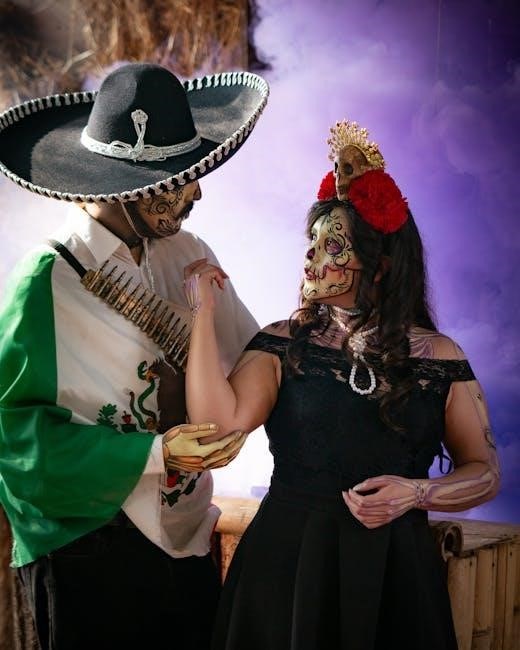
Major Characters in the Novel
Santiago Nasar‚ the doomed protagonist‚ is a generous and peaceful man whose fate is sealed by societal expectations. Angela Vicario‚ the bride‚ triggers the tragic events through her actions. Bayardo San Román‚ the groom‚ plays a pivotal role in the unfolding drama.
5.1 Santiago Nasar: The Victim
Santiago Nasar‚ the central figure of the novel‚ is a kind-hearted and peaceful man whose tragic fate is sealed by a combination of societal expectations and circumstance; Born into a wealthy family‚ Santiago is well-liked in his community‚ known for his generosity and warm demeanor. His life takes a devastating turn on the day of Angela Vicario’s wedding when he becomes the target of a premeditated murder. The novel explores Santiago’s final days‚ highlighting his innocence and the inevitability of his death. Despite his peaceful nature‚ Santiago’s fate is shaped by the rigid cultural norms of his society‚ making him a symbol of tragic victimhood in a world governed by honor and tradition.
5.2 Angela Vicario: The Bride
Angela Vicario is a young woman from a humble family‚ whose life becomes central to the tragic events of the novel. Her marriage to Bayardo San Román is intended to elevate her family’s social standing‚ but the discovery of her lack of virginity on their wedding night sets off a chain of devastating consequences. Angela is portrayed as a strong-willed and resilient character‚ who‚ despite the societal pressures and expectations placed upon her‚ maintains a quiet determination. Her actions and decisions‚ though influenced by the rigid norms of her culture‚ reveal a deep sense of survival and self-preservation. Angela’s story serves as a reflection of the limitations placed on women in a patriarchal society‚ where honor and reputation are paramount.
5.3 Bayardo San Román: The Groom
Bayardo San Román is a wealthy and charming man from a prestigious family‚ whose marriage to Angela Vicario is intended to solidify his social status. However‚ upon discovering that Angela is not a virgin on their wedding night‚ Bayardo’s pride is severely wounded. His actions subsequent to this discovery—abandoning Angela and returning her to her family—set in motion the tragic events that unfold. Bayardo’s character is marked by a sense of honor and a deep emotional detachment‚ which makes him both intriguing and enigmatic. His decision to marry Angela despite knowing little about her highlights the societal pressures and expectations surrounding marriage in Latin American culture during that time.
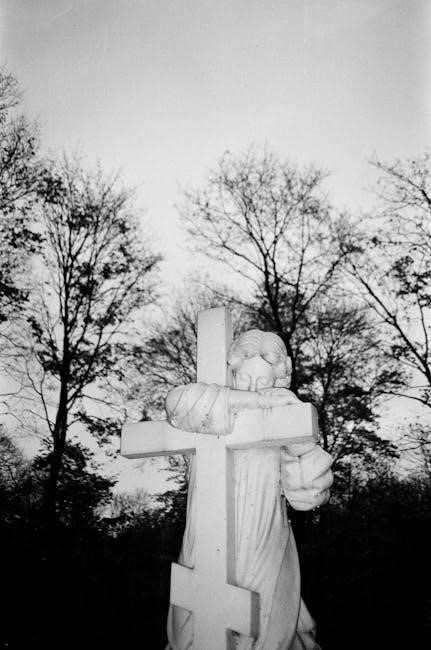
Cultural and Historical Context
Chronicle of a Death Foretold is set in 20th-century Colombia‚ reflecting rigid societal norms‚ honor-driven culture‚ and the pervasive influence of Catholicism in shaping individual and collective behaviors.
6.1 Colombian Society in the 20th Century
Chronicle of a Death Foretold is deeply rooted in the societal norms of 20th-century Colombia‚ where rigid hierarchies and traditional values dominated. The novel portrays a rural‚ conservative society where honor‚ family reputation‚ and religious beliefs were paramount. The strict moral codes‚ particularly regarding female virginity and marital fidelity‚ are central to the plot. Colombia’s historical context‚ marked by political instability and cultural isolation‚ shaped the characters’ behaviors and the community’s complicity in the tragic events. The novella reflects the tension between modernity and tradition‚ as well as the enduring influence of Catholicism‚ which governed ethical standards and societal expectations. These elements provide a rich backdrop for exploring themes of fate‚ honor‚ and collective responsibility.
6.2 The Role of Religion
Religion plays a significant role in shaping the moral and cultural landscape of the community in Chronicle of a Death Foretold. The novella highlights the pervasive influence of Catholicism‚ with the church serving as both a spiritual and social authority. The arrival of the bishop is a central event‚ yet it paradoxically coincides with the tragic murder‚ underscoring the tension between religious ideals and human failings. The Vicario family’s actions‚ driven by notions of honor and shame‚ are deeply intertwined with religious expectations. The novel critiques the rigid moral codes imposed by religion‚ which often perpetuate violence and injustice rather than fostering compassion or forgiveness. This duality reflects the complex interplay between faith and societal norms in 20th-century Colombia.
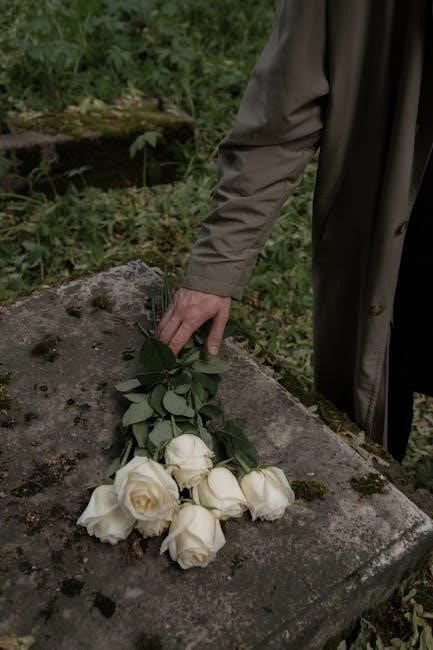
The Significance of the Title
The title underscores the inevitability of Santiago Nasar’s death‚ as the community anticipates the tragedy‚ heightening the sense of tragic irony and predestination.
7.1 Foreshadowing and Irony
The title Chronicle of a Death Foretold employs foreshadowing to signal Santiago Nasar’s inevitable fate‚ creating a sense of impending doom from the start. The narrative repeatedly hints at his murder‚ such as the arrival of the bishop and the townspeople’s awareness of the impending tragedy. Irony is central to the story‚ as the death‚ though foreseeable‚ remains unprevented‚ highlighting the community’s complicity and passivity. This contrast between knowledge and inaction underscores the novel’s exploration of fate and societal norms. The PDF version of the book includes analyses of these elements‚ emphasizing how García Márquez masterfully intertwines foreshadowing and irony to explore themes of destiny and human responsibility.
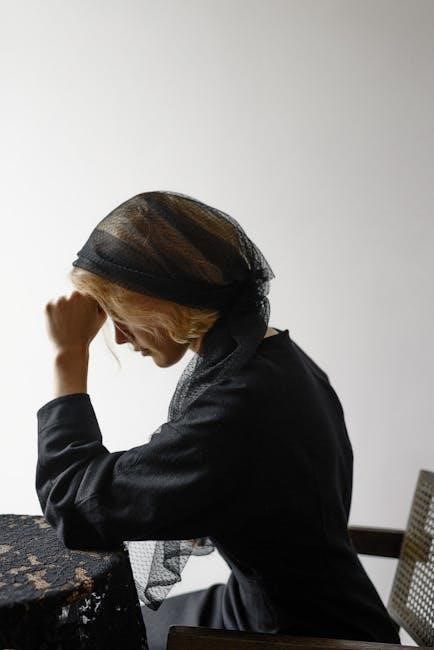
The PDF Version of the Book
The PDF version of Chronicle of a Death Foretold is widely available online‚ offering easy access to Gabriel García Márquez’s masterpiece. The digital format enhances readability.
8.1 Availability and Accessibility
The PDF version of Chronicle of a Death Foretold is readily available on various online platforms‚ including the Internet Archive and other digital libraries. Readers can access the novella for free‚ making it widely accessible to a global audience. The digital format allows for easy downloading and reading on devices like smartphones‚ tablets‚ and e-readers. Additionally‚ the PDF is available in both English and Spanish‚ catering to a diverse readership. This accessibility has contributed to the book’s enduring popularity‚ enabling new generations of readers to engage with Gabriel García Márquez’s masterpiece. The availability of the PDF ensures that the story remains relevant and accessible in the digital age.
8.2 Features of the Digital Edition
The digital edition of Chronicle of a Death Foretold offers a range of convenient features for readers. The PDF format includes bookmarked sections for easy navigation‚ allowing readers to jump between chapters seamlessly. The text is fully searchable‚ enabling quick access to specific passages or themes. Additionally‚ the digital version includes adjustable font sizes‚ catering to readers with visual impairments. Some editions feature footnotes and a linked table of contents‚ enhancing the reading experience. The digital format also preserves the original book’s formatting‚ ensuring that the narrative’s integrity remains intact. These features make the novella more accessible and user-friendly‚ aligning with modern reading preferences while maintaining the essence of García Márquez’s storytelling.
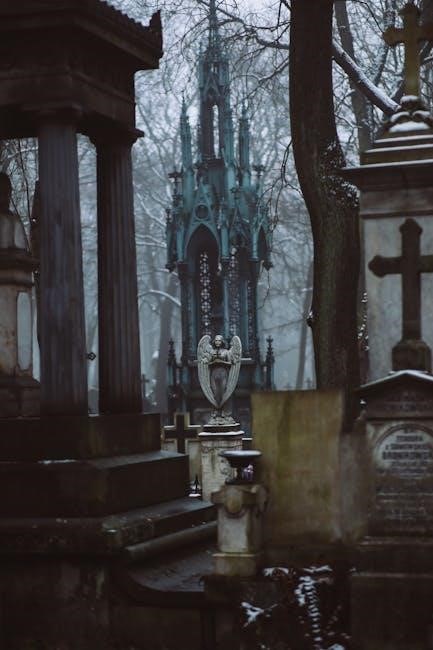
Critical Analysis and Reviews
Scholars praise Chronicle of a Death Foretold for its exploration of fate‚ honor‚ and societal norms. Readers commend its thought-provoking narrative and psychological depth.
9.1 Scholarly Interpretations
Scholars widely acclaim Chronicle of a Death Foretold for its intricate exploration of fate‚ honor‚ and societal norms. Many interpret the novella as a critique of rigid cultural traditions‚ particularly the Latin American obsession with honor and vengeance. The narrator’s unreliable perspective and non-linear storytelling have sparked debates about truth and memory. Dr. Isabella Rodriguez‚ a leading expert‚ highlights how García Márquez’s journalistic background lends the novel a documentary-like authenticity. Others‚ like Nat Chotvijit‚ analyze the novella through Mikhail Bakhtin’s theory of voice‚ emphasizing the interplay of multiple narratives. The work is also celebrated for its postcolonial undertones‚ exploring power dynamics and collective guilt. These interpretations underscore the novel’s depth and its enduring relevance in literary studies.
9.2 Reader Responses and Feedback
Readers globally have been deeply moved by Chronicle of a Death Foretold‚ praising its haunting narrative and universal themes. Many find the novella accessible yet profound‚ bridging literary and popular appeal. The PDF version has been particularly popular‚ offering readers a convenient way to engage with García Márquez’s masterpiece. Fans often highlight the novel’s ability to provoke reflection on fate‚ honor‚ and morality. Angela Vicario’s character‚ in particular‚ resonates with readers‚ sparking debates about gender roles and societal expectations. The story’s tragic inevitability leaves a lasting emotional impact‚ making it a favorite among book clubs and individual readers alike for its thought-provoking and deeply human exploration of Latin American culture.
Chronicle of a Death Foretold masterfully explores fate‚ honor‚ and tragedy. Its PDF version offers readers a convenient‚ well-structured way to experience García Márquez’s timeless tale.
10.1 Final Thoughts on the Novel’s Impact
Chronicle of a Death Foretold remains a masterpiece of magical realism‚ deeply exploring human nature‚ fate‚ and cultural norms. Its themes of honor‚ guilt‚ and inevitability resonate universally‚ making it a timeless work. The novella’s concise yet powerful narrative structure‚ combined with García Márquez’s journalistic style‚ creates a sense of intimacy and urgency. The PDF version ensures accessibility‚ allowing readers to engage with its profound insights and haunting beauty. The novel’s exploration of collective responsibility and societal expectations continues to spark critical discussions. As a result‚ Chronicle of a Death Foretold leaves an indelible mark on Latin American literature and global readers alike‚ cementing its place as a literary classic.

